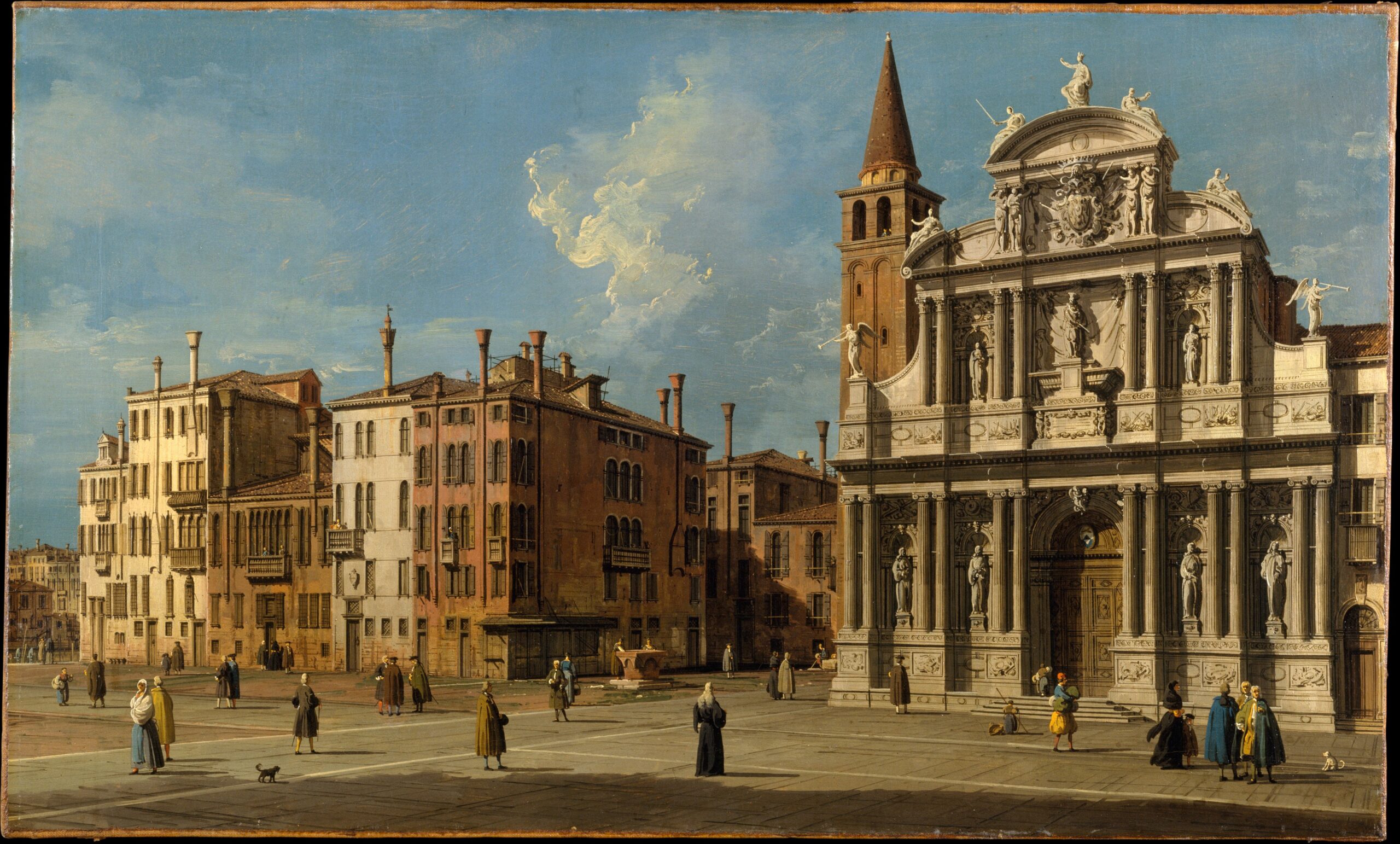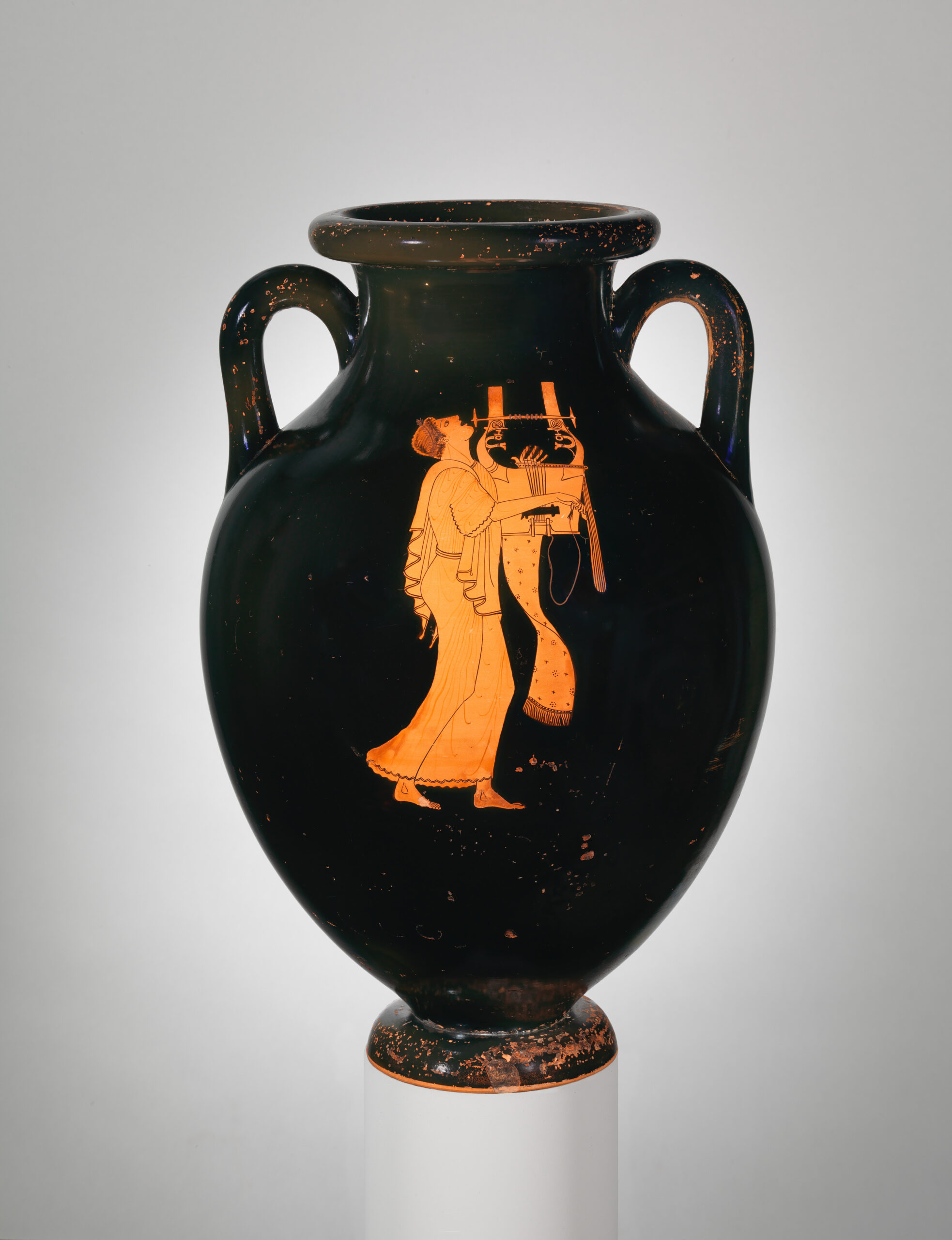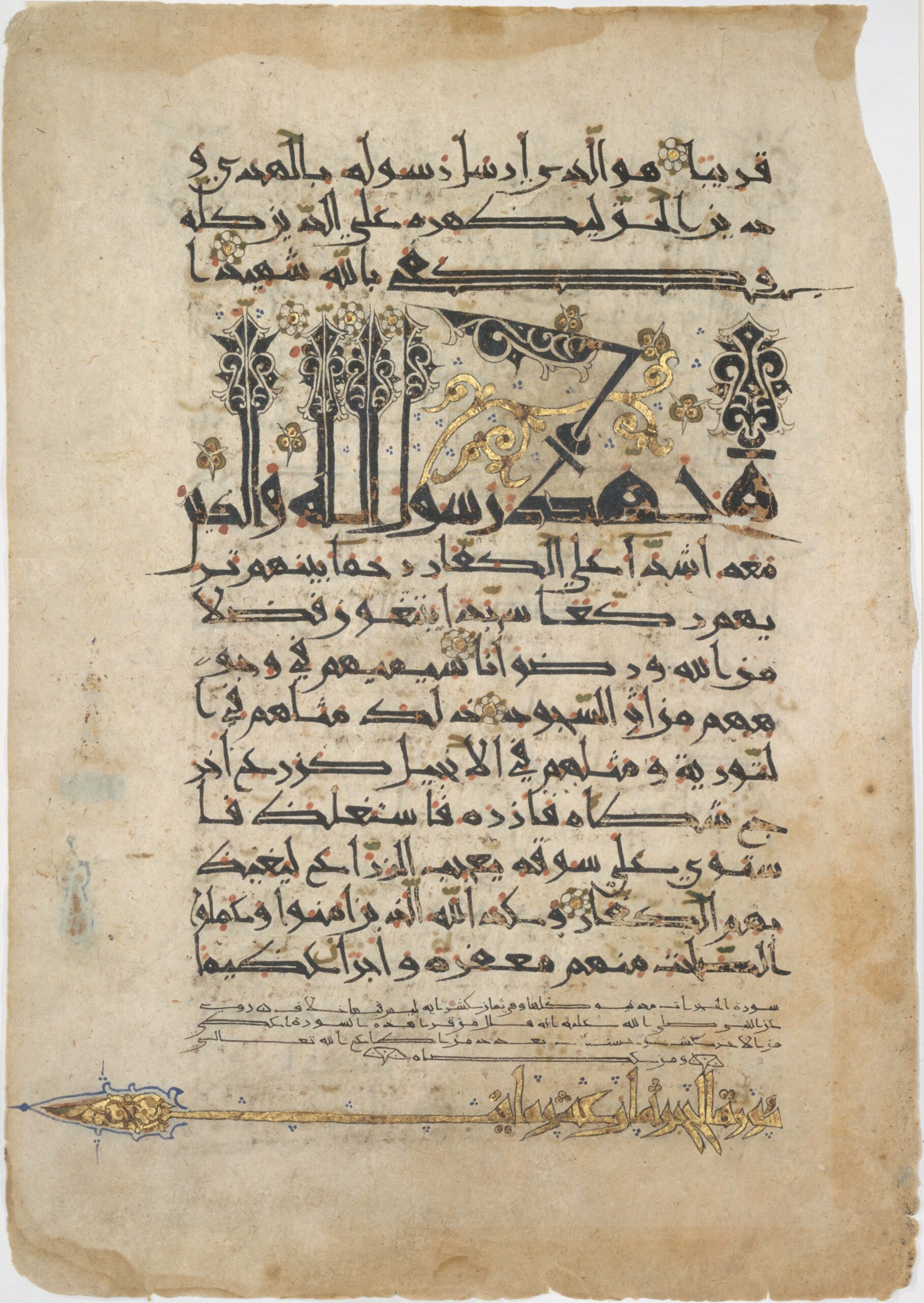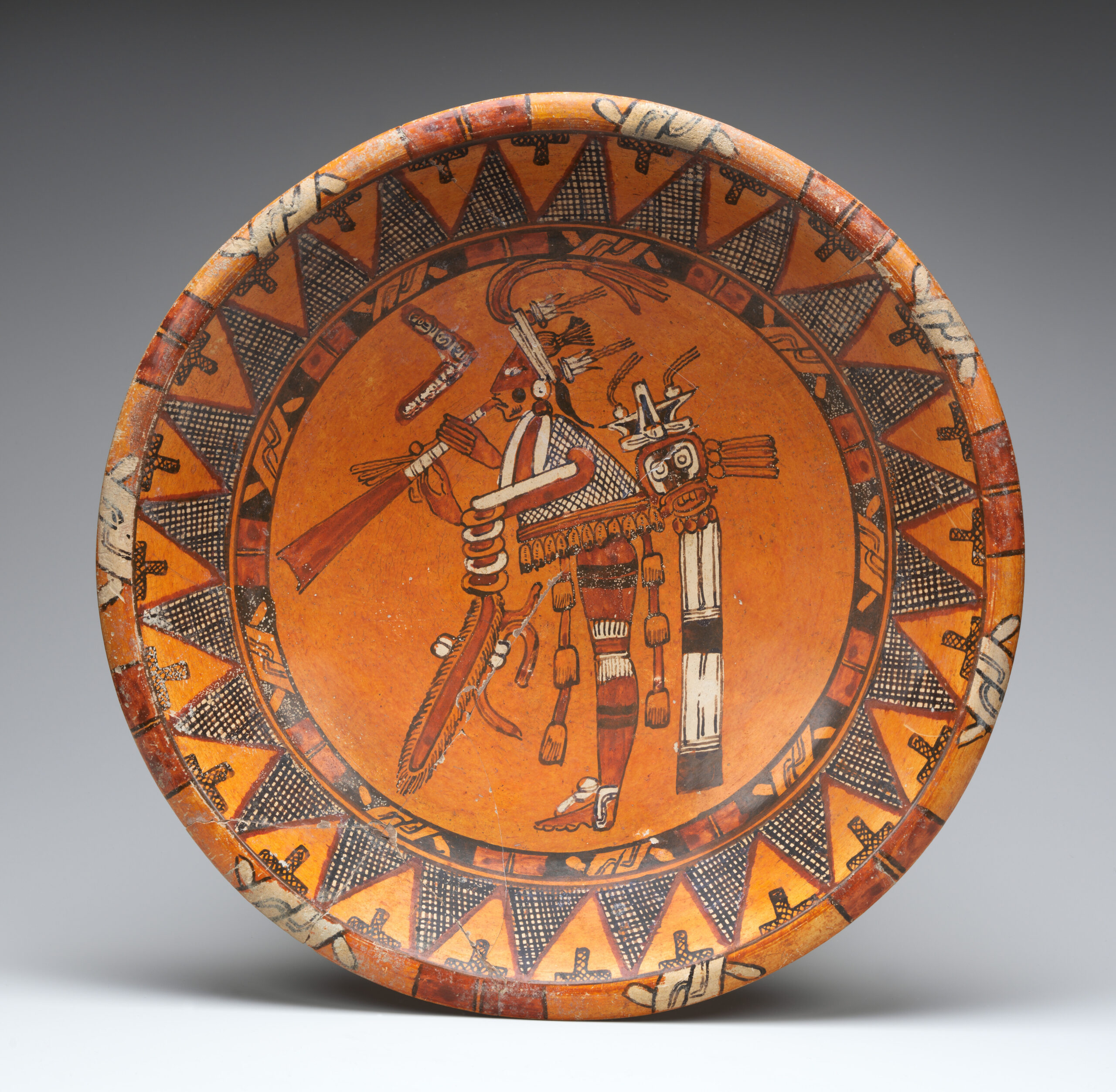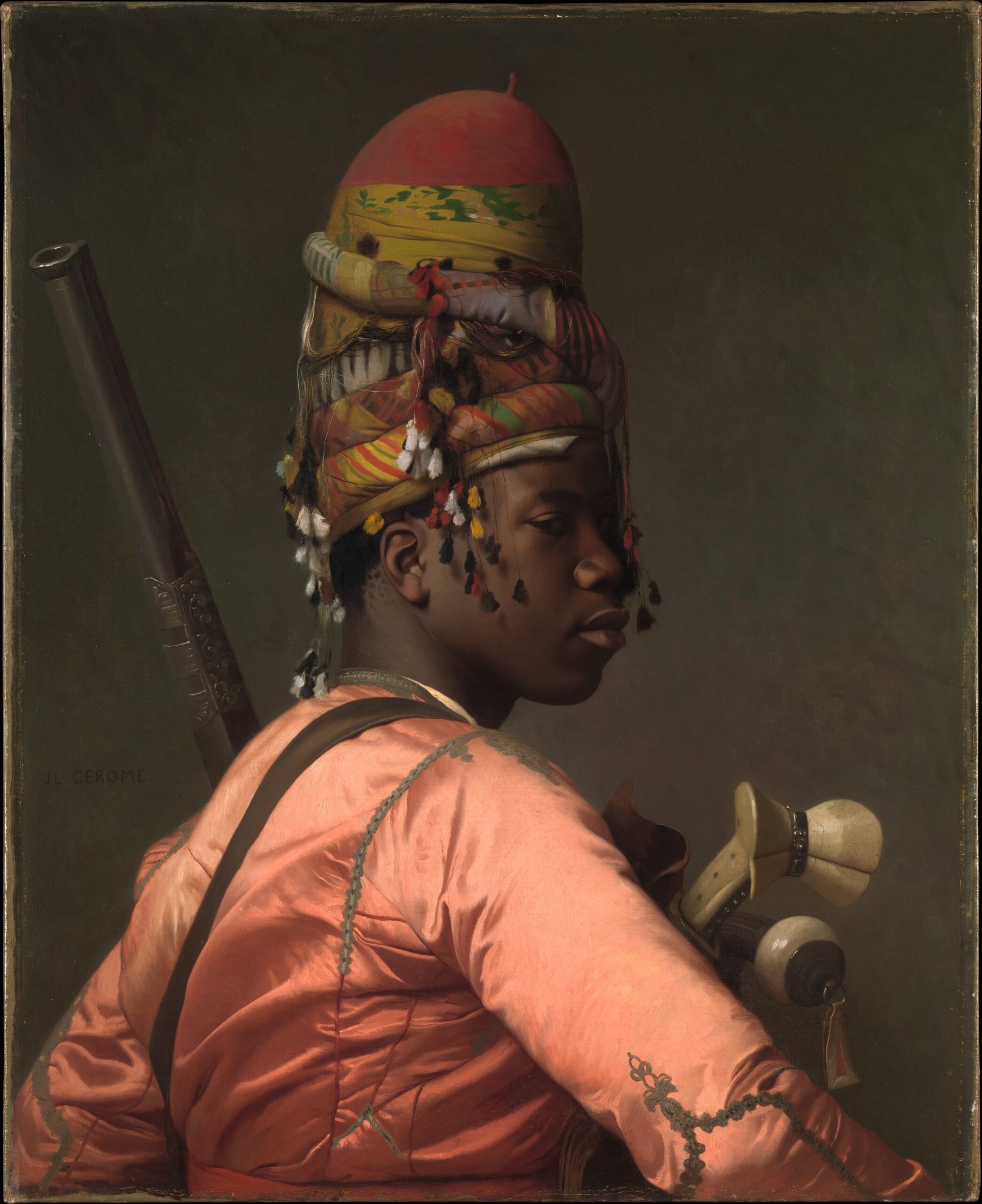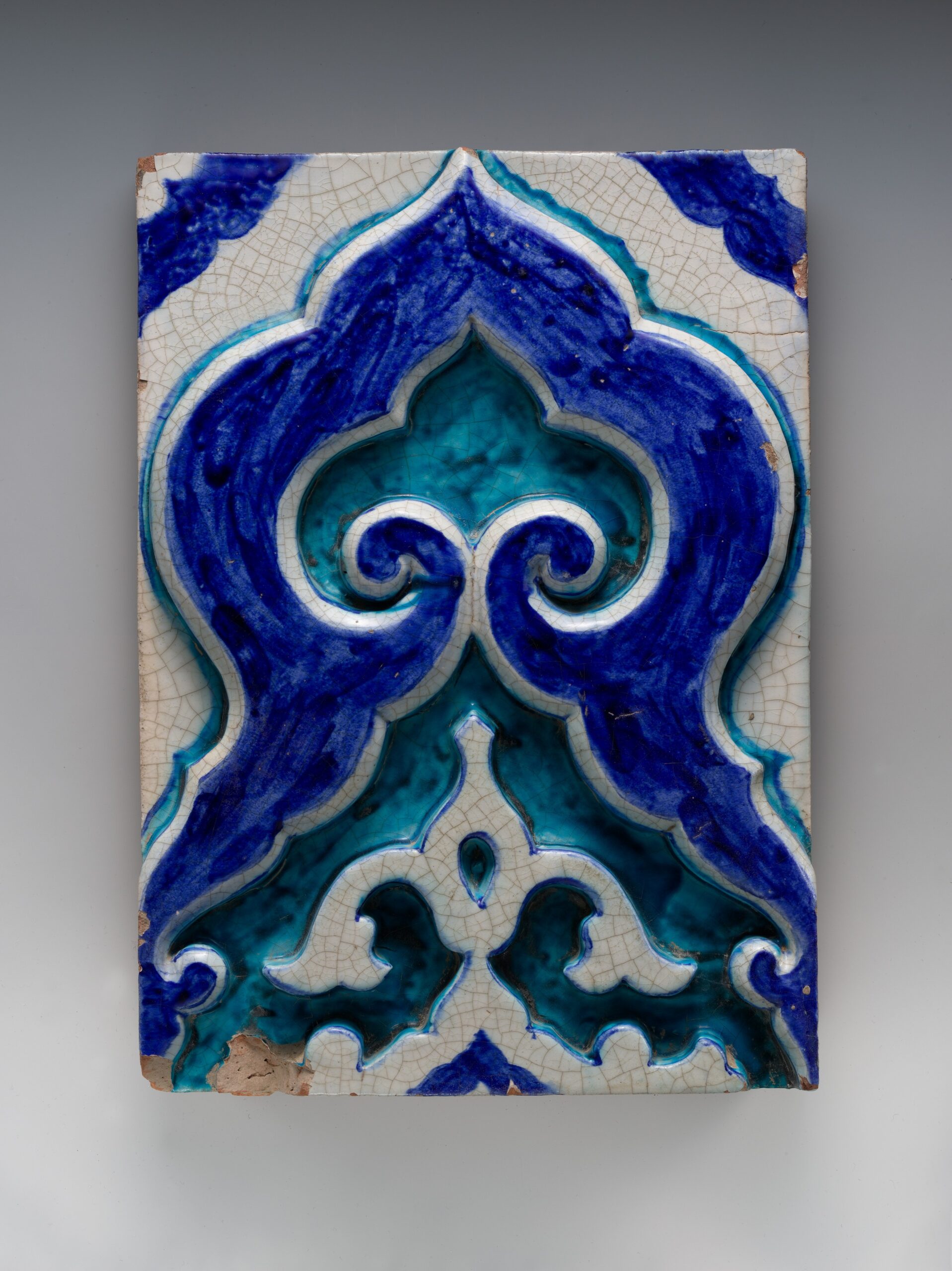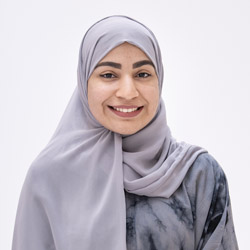- Academics
- Admissions & Enrollment Services
- Research
- Academic & Creative Spaces
- Strategic Partnerships
- Our Impact
- Student Affairs
- Campus & Community
VCUarts Qatar at the 2025 London Design Biennale - June 5–29, 2025
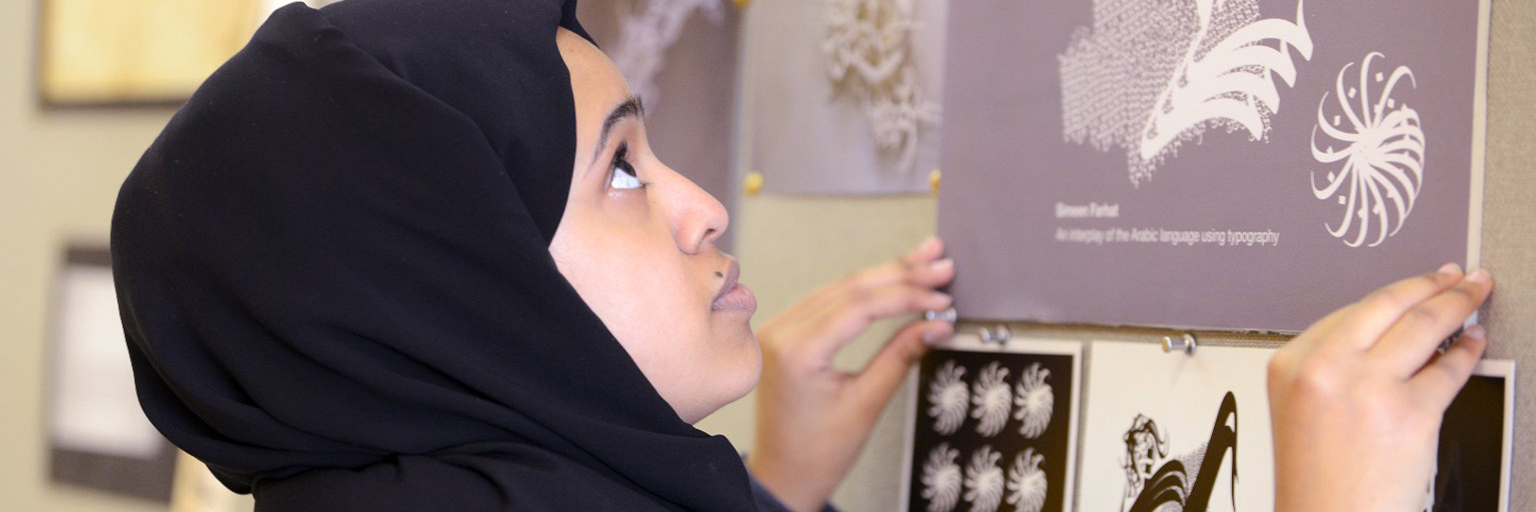
Art History (BA)
Overview
The Art History program at VCUarts Qatar offers a distinctive concentration in Islamic art within a global perspective. It shifts a Western-oriented curriculum prevalent in most university Art History programs to one that embraces a multi-cultural approach. Such an approach reflects the geographical location and historical involvement of Qatar, which since antiquity has been part of international trade routes, later linking Islamic lands with those beyond the Indian Ocean and the Mediterranean Sea. Students will have an opportunity to participate in VCUarts Qatar’s biennial Hamad bin Khalifa Symposia on Islamic Art, which seeks to make the latest and most interesting scholarship in this expanding field available to a wide audience, including scholars, artists, architects, designers, and the interested public.
Aside from Islamic art, our program’s global focus encompasses the visual cultures of Asia, Europe, Africa, and the Americas, providing students with a comprehensive understanding of the world’s diverse artistic and cultural heritage traditions. This focus challenges Eurocentric perspectives, promotes cultural diversity, celebrates marginalized voices, encourages cross-cultural dialogue, expands our artistic vocabulary, fosters an inclusive and interconnected society, and ultimately deepens our understanding of the global human experience.
Why study Art History?
Examine culture, past and present
Art History explores how images, objects, and spaces shape and embody the beliefs and concerns of a society. Using a range of methodologies, art historians interpret visual materials as expressions of sociopolitical ideologies, as nodes of global exchange, and as discourse on issues including gender relations, national identities, and post-colonial theories, to name a few.
Develop visual literacy skills
Art history develops skills in historical interpretation, visual literacy, and critical analysis of the visual arts and architecture. Students hone skills that enable them to critically derive meaning from material culture and articulate it coherently and persuasively through language, both written and oral.
Prepare for the future
Through the major and minor in Art History, VCUarts Qatar aims to educate a new generation of critical thinkers and cultural heritage stewards who recognize and appreciate the interrelatedness and complexity of global issues.
What skills will you gain in this program?
- Acquire detailed knowledge on visual and material culture from antiquity to the contemporary.
- Learn how to analyze and contextualize images, objects, monuments, and sites.
- Reflect on the significance and interpretations of visual materials in connection with relevant socio-political environments as well as other factors such as gender, religion, race, or class.
- Enhance research skills, critical thinking, and analytical reasoning.
- Develop excellent oral and written communication skills needed to work effectively in multi-disciplinary professional settings or pursue graduate studies.
- Learn from academics and other practitioners in the field of art, art history, museums, and cultural heritage within Qatar, the Middle East, and internationally.

Curriculum
Selected core courses
ARTH 103/104 Surveys of Art History
Survey courses offers students a foundation in the visual arts of different cultures, from the prehistoric era to the present day, providing a strong basis for successful future studies across the art and design disciplines. Through lectures, discussions, and creative projects, students learn to identify and analyze major works of art, periods, and artists, develop pertinent vocabulary related to art, and cultivate an understanding of how to conduct visual analysis.
ARTH 260 Islamic Art Survey
This course introduces the arts of the Islamic lands between Spain and Central Asia from the genesis of Islam in 7th-century Arabia through to the 20th century. By examining the socio-historical contexts within which Islamic art and architecture developed, the course provides a basic understanding of its major themes, regional and dynastic variations, and current scholarship. The course will consider topics such as religion, politics, trade, court life, urbanism, cultural diversity, and gender by mainly looking at the built environment, the Book Arts, and painting and objects across different media. Students learn to think critically, perform research, and communicate both orally and in writing.
ARTH 292 Writing for Art History
Writing is central to the practice of art history: curators, museum educators, art critics, art historians, art lawyers, art dealers, and non-profit development officers are all professional writers as well. In this course, students will hone their writing skills, with emphasis on argumentation, and develop their own ideas about the standards by which we evaluate art. Students will gain familiarity with different genres of writing, feel a sense of control over the writing process, and revise and proofread written work in order to produce polished texts.
ARTH 293 Professional Practices in Art History
This course introduces students to a variety of career pathways within art history and includes practical advice about career preparation in the field. Through a combination of lecture and guest-speaker workshops, students learn about careers in academia, museums, libraries, publishing, arts administration, and art conservation, among others. By the end of the course, students will create a portfolio of professional documents and give a short presentation about their future career goals. Students will gain knowledge of a variety of career pathways in art history and strategies to pursue professional opportunities relevant to their goals, practice professionalism and networking by conducting informational interviews with people in the field, and produce a portfolio of professional materials, including a resume, cover letter, short bio, and other documents relevant to future careers.
ARTH 302 Introduction to Museums
Introduction to Museums is a survey of contemporary theories, issues, and practices in the museum environment. Topics include museum identity and function, administration, museum ethics, collections maintenance and management, curatorial and exhibition issues, and education and public interaction. Students visit museums across Qatar with guided tours and meet with a variety of museum professionals. This course prepares students to critically engage with museum structures and builds awareness of the many potential careers within museums.
ARTH 390 Art Historical Methods
Art Historical Methods provides students with an overview of the history of art history through a chronological survey of key methods of analysis that have defined the discipline from its beginnings to the present. Students develop critical thinking and writing skills specific to art history through written assignments and discussions of readings. This course prepares students for advanced studies in art history, laying the foundation for graduate studies and supporting potential careers within the discipline.
ARTH 490 Senior Seminar
The Senior Seminar is based on weekly discussions in which we address topics based on selected art historical readings and other materials. The seminars are student-centered as participants are expected to engage in conversation within an open and welcoming environment and discuss critical and personal reflections on art, readings, theories, and methods. The components of this course will specifically prepare students to access and navigate the professional world by enhancing skills such as communication, presentation, research, and writing.
Art History Minor
Undergraduate students from other disciplines may join the Islamic Art history minor. For the minor, students will undertake a global survey of Islamic art and architecture, among several other courses, and study the development of visual culture across historical periods and diverse geographies. The minor helps students learn to meaningfully “read” images and develop visual literacy skills, foster intellectual curiosity, broaden cultural horizons, and stimulate a lifelong appreciation for the arts.
Career Options
The diversity of skills Art History students learn is reflected in the range of careers they pursue after graduating from VCUarts Qatar. Some students take up graduate studies to be able to enter a career in research or university teaching. Others have established themselves in a variety of career paths including filmmaking, school education, curating, art writing, design innovation, archives, heritage conservation, policymaking, and government advising. Art History graduates go on to work as:
- Appraisers
- Art Consultants
- Arts Administrators
- Art Dealers
- Conservators (courses in chemistry required)
- Curators/Archivists (advanced degree usually required)
- Editors/Writers
- Education Coordinators
- Grants Specialists
- Gallery Assistants
- Arts Lawyers
- Museum Technicians
Our People

Dr. Radha Dalal
Associate Professor and Director of Art History
Specialization Islamic Art and Architecture
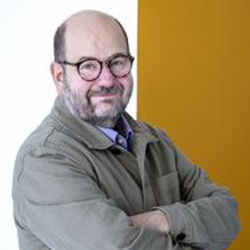
Dr. Jochen Sokoly
Associate Professor
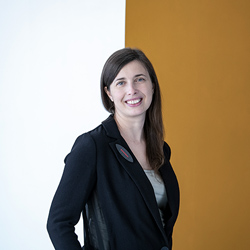
Dr. Monica Merlin
Assistant Professor
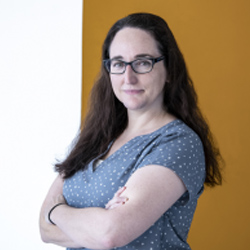
Dr. Bethany Simpson
Assistant Professor

Dr. Holiday Powers
Assistant Professor

Dr. Marisa Brown
HBKU Symposium Manager
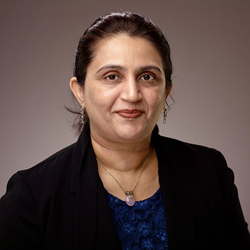
Dr. Neelima Jeychandran
Assistant Professor
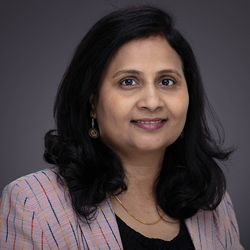
Rebecca David
Administrative and IAS Program Specialist
Student Experience

Program Experience
VCUarts Qatar is a rigorous, rewarding, multicultural experience. All graduates complete a Liberal Arts and Sciences core curriculum in addition to their major program; these courses enrich a student’s understanding of the world and help them frame their art and design studies into a broad intellectual context. High-achieving students will also be invited to follow our Honors program to supplement and enhance their education.
Art history students will visit a variety of arts institutions across Qatar and engage with museums and other professionals. Field study trips offer hands-on opportunities to experiment with different ways of handling and exhibiting artwork. Students will apply these skills as they initiate new research for their coursework.

Experienced Faculty
Students will have opportunities to learn from experienced faculty members who conduct research and teach in areas including: Islamic Art; Asian Art; Egyptian, Greek, and Roman Art and Archaeology; African Art, and Modern and Contemporary Arts from the Middle East and beyond.

Internship Opportunities
Students can earn course credit while interning at a museum, gallery, archive, or related organization. Internships provide students with work experience and help to clarify academic and vocational interests. These are often unpaid but may lead to sponsorship or employment after graduation. Program director approval is required before a student can engage in an internship to ensure program alignment.

Local and International Field Trips
The Art History program offers the opportunity to explore art at institutions in Doha. These include the Museum of Islamic Art, Mathaf: Arab Museum of Modern Art, the National Museum of Qatar, the Sheikh Faisal Museum, Msheireb Museums, as well as galleries at Katara Cultural Village. Additionally, the program conducts international field trips. Past destinations have included Italy, Portugal, Japan, Singapore, India, and the United States.

Visiting International and Regional Experts
The Department organizes lectures and workshops by visiting scholars and experts. These have previously featured: Dr. Riyaz Latif, Dr. Pushkar Sohoni, Dr. Hala Auji, Dr. Nina Ergin, Dr. Nancy Micklewright, Dr. Lisa Golombek, Dr. Marika Sardar, among many others.
Watch 10th Anniversary Art History Video
Meet our Alumni

Siddhartha Shakya, Class of 2017
Siddhartha currently owns an athletic wear startup called Yala Wears in Nepal. Alongside this, Siddhartha is also involved in his family business which deals in high-quality contemporary traditional Newa artworks, called Bodhisattva Gallery, where he designs the gallery and exhibition, using the knowledge he gained from studying Art History, visiting museums, and interning at the Museum of Islamic Arts.
Siddhartha reflects on his experience studying Art History at VCUarts Qatar:
“Coming from a country where the majority of the population consists of Hindus and Buddhists, studying in Qatar gave me a new perspective on the Middle East and Islam. Also, the resources that were available to use at the university and Education City was something special, and many of these would not be free even on our home campus. The biggest resource we had was being able to interact with the faculty members at any time. Due to the size of VCUarts Qatar, we were able to reach out to our professors for help and we were encouraged to visit them.”
He further recommends the Art History program at VCUarts Qatar:
“I would recommend the Art History program at VCUarts Qatar primarily due to the small classes. If you were to take the same classes in any other public art school then the lecture hall would have over sixty students while the program in Doha has a maximum of 25 students. One of the most important parts of my four years were the trips to different countries: Italy, Portugal, USA, and Japan. Learning in class, textbooks, and research is vital but being able to actually visit the sites gives a completely different perspective. Lastly, having the freedom to explore other programs not just at VCUarts Qatar but other partner universities inside Education City, which is not possible on the home campus.”

Anushesh Zaman, Class of 2019
Anusheh graduated with University Honors and Summa Cum Laude, and also received the Class Champion Award at VCUarts Qatar. She currently works as the Community and Social Activity Coordinator at Qatar Foundation.
Studying Art History helped Anusheh become confident with her writing, which she was able to use during her fellowship with the Qatar America Institute of Culture. Anusheh enjoyed the interdisciplinary nature of the Art History major, linking it to courses and topics in other institutions for a more holistic learning experience. Her studies at VCUarts Qatar forged an interest in exploring Orientalism. She went on to do her Master’s at UCL where she did a comparative exhibition analysis of two museums and their approach to Orientalism.
Anusheh encourages prospective students considering a degree in Art History at VCUarts Qatar:
“With so many creative platforms and museums opening in Qatar and the Gulf region, this is the program to be a part of. Art History highlights and links the current social and political issues, in the region and around the world, which you can study and pursue in your career or graduate school.”

Dimitri Yuri, Valedictorian of the Class of 2018
Dimitri is a writer/director at The Film House, a Doha-based film production company that produces anything from commercials to short films and documentaries. He graduated with Honors from VCUarts Qatar.
Dimitri realized how “history” and “story” are not so different from one another: “A lot of things we know about important artists from the past are based on accounts by people whose credibility is still a mystery (I am looking at you Giorgio Vasari). It made it clear that the relationship between storytelling and history is a lot more complicated than I once thought.”
Dimitri explains why he decided to pursue Art History at VCUarts Qatar:
“I went into Art History because I knew it would inform every creative endeavor I decide to take on. From a creative standpoint, it gave me a library of visual references that I use every single day. The more art you look at, the more you internalize it, and once that happens, it allows you to be a lot more creative – sometimes without even realizing that your ideas are just the synthesis of everything you learned before.”


